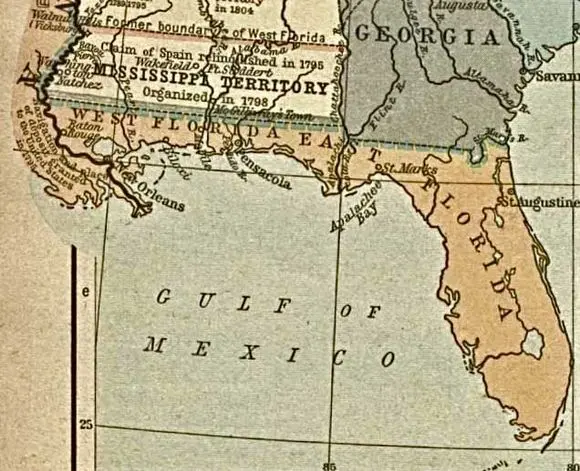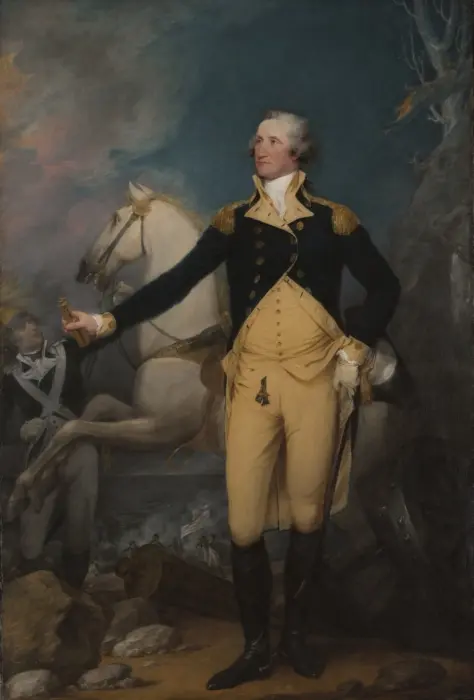The importance of Florida in early American history is often overlooked.
The so-called “thirteen original colonies” that would lead to the creation of the United States exclude the fourteenth and fifteenth colonies of East Florida and West Florida.
St. Augustine, Florida was an active city for more than four decades before the English established a settlement at Jamestown, Virginia in 1607.
The Spanish gave Florida its name in 1513, and established the first continuously occupied European settlement in what would become the United States in 1565. After two centuries under Spanish occupation, the British took control of Florida in 1763.
The British separated the area into East Florida, with its capital in St. Augustine, and West Florida, with its capital in Pensacola. Under British rule, East Florida consisted of what is the modern boundary of the state, east of the Apalachicola River. West Florida included the modern Panhandle of Florida, as well as parts of what are now Louisiana, Mississippi, and Alabama.
Roger Smith focused his doctoral studies at the University of Florida on the topic of Florida in the American Revolution.
“On August 11, 1776, when news of the Declaration of Independence became known in St. Augustine, they became so incensed that they made effigies of John Hancock and Samuel Adams and hung them in the trees in St. Augustine Plaza and set them on fire,” Smith says. “This colony was adamantly loyal when the war broke out.”
At the start of the American Revolution in 1776, East Florida and West Florida were the only two southern colonies that remained loyal to King George III. This was a problem for the British, as the southern colonies in North America supplied food, clothing, and other supplies to their sugar plantations in the Caribbean.
“We always look at the American Revolution from an American perspective, with thirteen colonies from New Hampshire down to Georgia,” says Smith. “When you look at the war from a British perspective, you realize that we’re not talking about thirteen colonies, we’re talking about thirty-three colonies that they had to be concerned with, from Nova Scotia down to Grenada. Half of those colonies, sixteen of them, were in the Caribbean.”
During the American Revolution, approximately sixty percent of the British military was stationed in the Caribbean, to protect sugar production. In the eighteenth century, sugar was as important to the global economy as oil is today.
The Floridas were located right between the British sugar plantations in the Caribbean, and the northern colonial revolt. The British launched attacks on the American rebellion from both St. Augustine in East Florida, and Pensacola in West Florida.
St. Augustine was particularly important to the British, as it had the only stone fortresses south of the Chesapeake Bay. The British had repeatedly attacked the Castillo de San Marcos when it was under Spanish control, and realized the strength of its coquina walls.
“They saw East and West Florida as barriers to sedition from rolling out into the Caribbean, and then launching pads for regaining the American south,” Smith says.
Although the importance of Florida in the American Revolution is usually ignored in history books, George Washington was well aware of the area’s strategic significance. Washington wrote more than eighty letters about the Florida colonies to the Continental Congress and his generals, and he authorized five separate invasions of East Florida between 1776 and 1780.
During a series of battles from 1779 to 1781, Spain was able to recapture West Florida from the British. When the American Revolution ended in 1783, England returned East Florida to the Spanish to keep control of Gibraltar.
Florida would become a United States Territory in 1821, and was named a state in 1845. During the Civil War, Florida seceded from the Union, which is probably why its role in the American Revolution has been minimized.
It wasn’t until the 1880s that doctoral degrees in History were available in the United States, and early American historians tended to write from a northern perspective. “They took the opportunity to get their own little bit of vengeance on the south, and they basically wrote the southern colonies out of the first five years of the American Revolution,” Smith says.

